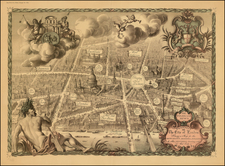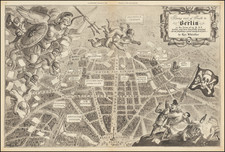Search
Reginald John "Rex" Whistler (1905-1944) was an eminent British artist renowned for his multifaceted contributions to art and design, encompassing murals, society portraits, theatrical costumes, and commercial illustrations. Born into a family with deep artistic and architectural roots, Whistler's early life in Eltham, Kent, set the stage for a vibrant career that intertwined with the cultural fabric of early 20th century Britain.
From a young age, Whistler exhibited a profound artistic talent, which was recognized and nurtured at the Slade School of Fine Art. His work, characterized by its intricate detail and whimsical nature, quickly gained acclaim. Notably, his mural for the Tate Gallery's restaurant, completed in 1927, though now critiqued for its stereotypical imagery, was a testament to his skill and imagination at just 22 years old. This work marked the beginning of a series of prestigious commissions, including those for Shell Petroleum and the Radio Times, and designs for Wedgwood inspired by the pastoral beauty of Clovelly, Devon.
Throughout the 1930s, Whistler's reputation flourished within London’s cultural elite. His portraits and murals captured the essence of the "Bright Young Things," a term denoting a group of bohemian young aristocrats and socialites of that era. His ability to infuse portraits with personality and elegance made him a favorite among figures such as Edith Sitwell and Cecil Beaton. His murals for Edwina Mountbatten’s luxury flat in Park Lane further exemplified his distinct style, which combined classical influences with modern sensibility.
However, Whistler's artistic career was interrupted by World War II. Despite his age and established career, he enlisted in the Welsh Guards, driven by a sense of duty and patriotism. His service was marked not only by bravery but by a continued commitment to art, famously carrying paintbrushes alongside his military equipment. His role as a burial officer, though morbid, underscored his deep respect for his fellow soldiers.
Tragically, Whistler’s life was cut short in 1944 when he was killed in action in Normandy, fulfilling his own poignant premonition of his death. His final act was one of heroism, leaving his tank to aid fellow soldiers. This act not only marked the end of a promising artist but also immortalized him as a figure of courage and sacrifice.
Posthumously, Whistler’s legacy has been preserved through various memorials, including a striking glass engraving by his brother Laurence at Salisbury Cathedral, and an extensive archive of his works held by the Salisbury and South Wiltshire Museum. This collection, which includes thousands of his drawings, designs, and illustrations, was exhibited in 2013, reaffirming his lasting impact on both the artistic and cultural landscapes of Britain.
Whistler’s life and work continue to be celebrated for their artistic merit and his unique contribution to the narrative of British art in the turbulent context of the 20th century.




